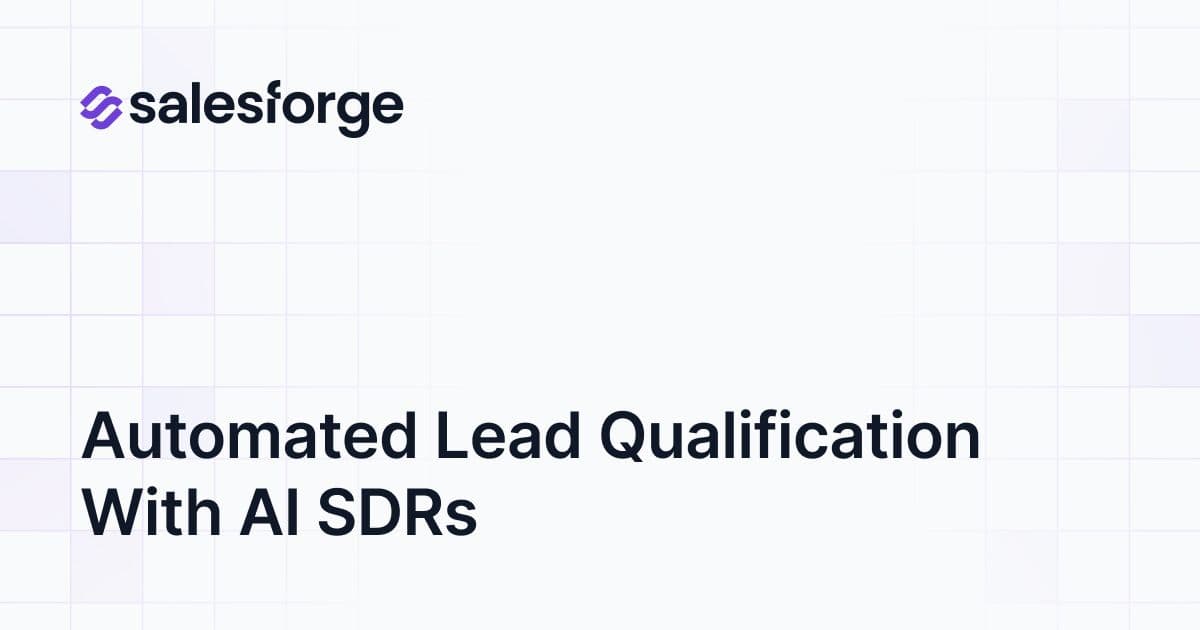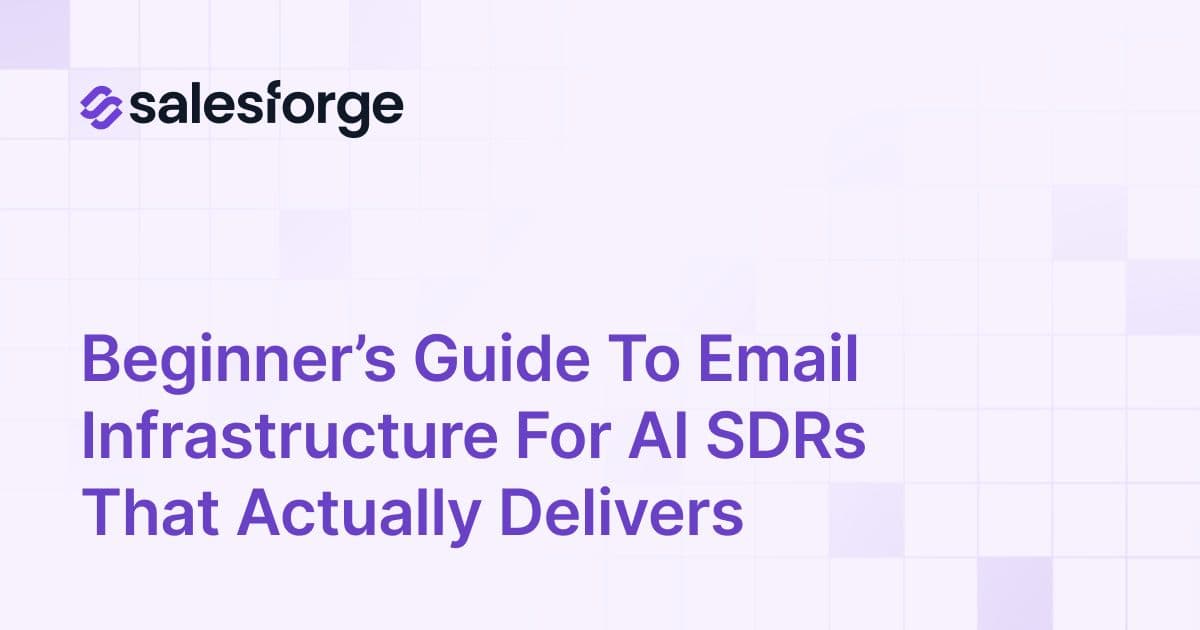How AI Uses Behavioral Data to Personalize Outreach
AI has transformed cold email outreach by using behavioral data to craft messages that resonate with individual prospects. Platforms like Salesforge, Outreach, Lemlist, and HubSpot analyze signals such as website visits, email engagement, and purchase patterns to personalize communication and improve response rates. Here's what you need to know:
- Salesforge: Focuses on email personalization with add-on AI tools like Agent Frank, offering multilingual capabilities and scalable automation across email and LinkedIn. Pricing starts at $48/month.
- Outreach: Provides advanced behavioral analytics and AI-driven optimization for large teams, excelling in multi-channel sequences and CRM integration.
- Lemlist: Stands out with visual personalization and LinkedIn automation, ideal for creative teams seeking attention-grabbing outreach.
- HubSpot: Tracks the entire customer journey, offering lead scoring and dynamic workflows for businesses focused on long-term engagement.
Quick Comparison:
| Platform | Best For | Key Features | Starting Price |
|---|---|---|---|
| Salesforge | Small to mid-sized teams | AI personalization, unlimited mailboxes, LinkedIn outreach | $48/month |
| Outreach | Large enterprises | Behavioral insights, sequence automation | Custom pricing |
| Lemlist | Creative outreach | Visual personalization, LinkedIn tools | $59/month |
| HubSpot | Full customer lifecycle | Lead scoring, dynamic workflows | $50/month |
AI-driven tools are making cold outreach more effective by turning behavioral data into actionable insights, ensuring tailored, relevant communication at scale.
1. Salesforge

Salesforge is an AI-powered cold outreach platform designed to take personalized outreach to the next level. By leveraging behavioral data, it transforms the way businesses approach email and LinkedIn outreach, moving away from generic templates and instead tailoring messages that resonate with individual prospects. Here's a closer look at how Salesforge is reshaping cold outreach.
Behavioral Data Insights
Salesforge's AI engine dives deep into digital interactions to create detailed profiles of potential leads. By analyzing engagement patterns, it identifies where prospects are in their buying journey. This data-driven approach ensures outreach is timed and tailored to match specific buying signals, making communication more relevant and impactful.
AI-Driven Personalization
The platform doesn’t just stop at profiling - it uses AI to craft personalized subject lines, email content, and calls-to-action (CTAs) that speak directly to each prospect's needs. It considers various lead attributes, ensuring that every message aligns with the recipient's priorities. Plus, its multilingual capabilities allow businesses to connect with global audiences while maintaining the appropriate tone for different regions.
Automation and Scalability
Salesforge simplifies large-scale campaigns by managing multiple mailboxes seamlessly. Its Warmforge feature builds sender reputation gradually, while integrated email validation minimizes bounce rates. This combination ensures high-volume campaigns maintain deliverability and sender credibility.
Standout Tools and Integrations
One of its standout features, Agent Frank, automates the entire outreach process across email and LinkedIn - from finding leads to booking meetings - while keeping every interaction personalized.
The Primebox™ unified inbox consolidates responses from various mailboxes and campaigns and unlimited LinkedIn accounts, making it easier to manage replies and maintain consistent follow-ups across all communications.
Pricing Options
Salesforge offers flexible pricing to suit different needs:
- Pro Plan: $48/month, includes 5,000 emails and unlimited mailbox connections.
- Growth Plan: $99/month, increases capacity to 50,000 emails and unlocks LinkedIn outreach.
- Agent Frank: $599/month (billed quarterly), includes 1000 active contacts per month.
With its range of features and competitive pricing, Salesforge positions itself as a powerful tool for businesses looking to elevate their cold outreach strategies.
<script>(function(d,u,ac){var s=d.createElement('script');s.type='text/javascript';s.src='https://a.omappapi.com/app/js/api.min.js';s.async=true;s.dataset.user=u;s.dataset.campaign=ac;d.getElementsByTagName('head')[0].appendChild(s);})(document,372145,'tu1or50rqqejh816h1cm');</script>
2. Outreach
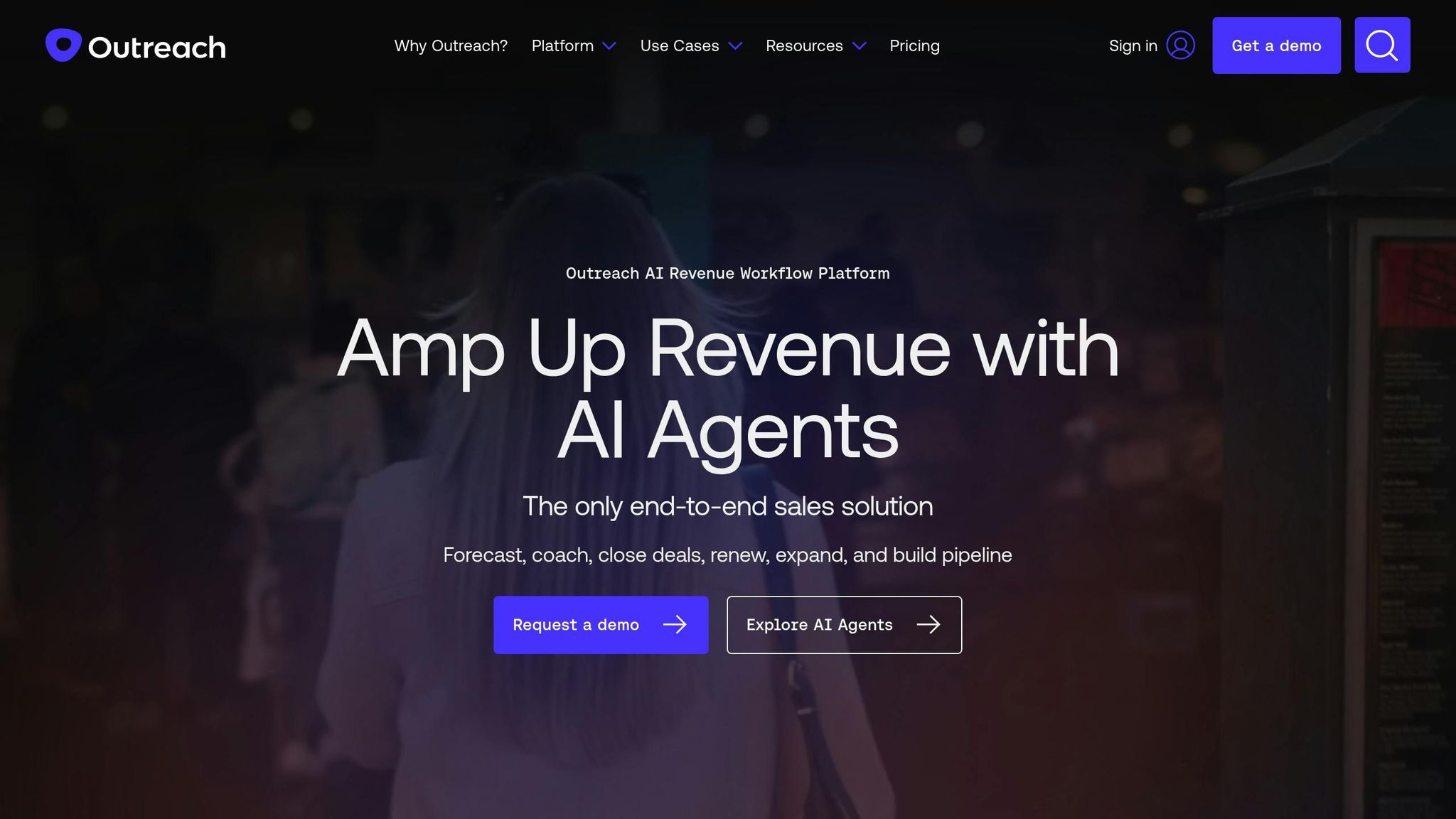
Outreach stands out as a robust sales engagement platform that combines behavioral data analysis with AI-driven personalization. Over time, it has expanded its capabilities to include tools that help sales teams decode prospect behaviors and fine-tune their outreach strategies.
Behavioral Data in Action
Outreach captures behavioral signals from emails, website visits, and social media interactions to create detailed prospect profiles. It identifies buying intent by tracking actions like repeated visits to pricing pages, downloading resources, or engaging with targeted emails. This data helps sales teams focus on leads that show clear signs of interest.
Similar to Salesforge, Outreach turns raw behavioral data into practical insights, empowering teams to craft more effective, personalized outreach. It also provides analytics on sequence performance, highlighting which behaviors lead to the best response rates. This allows teams to adjust their strategies based on real data instead of guesswork.
AI-Driven Personalization
Outreach's AI uses these insights to customize messaging based on individual behaviors. By analyzing previous interactions, the platform recommends tailored subject lines, content, and even the best times to send messages, improving with every interaction.
Its smart scheduling feature takes historical engagement data into account to pinpoint the most effective times for email delivery, ensuring that messages land when prospects are most likely to engage.
Scalability and Automation
The platform automates multi-channel sequences - spanning emails, calls, social touches, and tasks - while keeping personalization intact. These sequences are triggered by specific behaviors and follow preset intervals.
Using conditional logic, Outreach adapts sequences dynamically. For instance, if a prospect clicks on a pricing link, the sequence can shift to include more detailed product information. Additionally, its lead routing capabilities ensure that engagement history and behavioral data stay consistent as prospects move through various stages of the sales process, even when leads are reassigned.
Standout Tools and Integrations
Outreach integrates seamlessly with major CRMs like Salesforce, HubSpot, and Microsoft Dynamics, ensuring that behavioral data flows smoothly into existing systems. Its conversation intelligence tools analyze email and call interactions to detect behavioral trends and sentiment changes, offering insights into how prospects' attitudes evolve during the sales journey. On top of this, its advanced reporting and analytics connect behavioral data to sales outcomes, giving teams a clear picture of what works and where to improve.
Next, we’ll take a closer look at how Outreach compares to Lemlist.
3. Lemlist
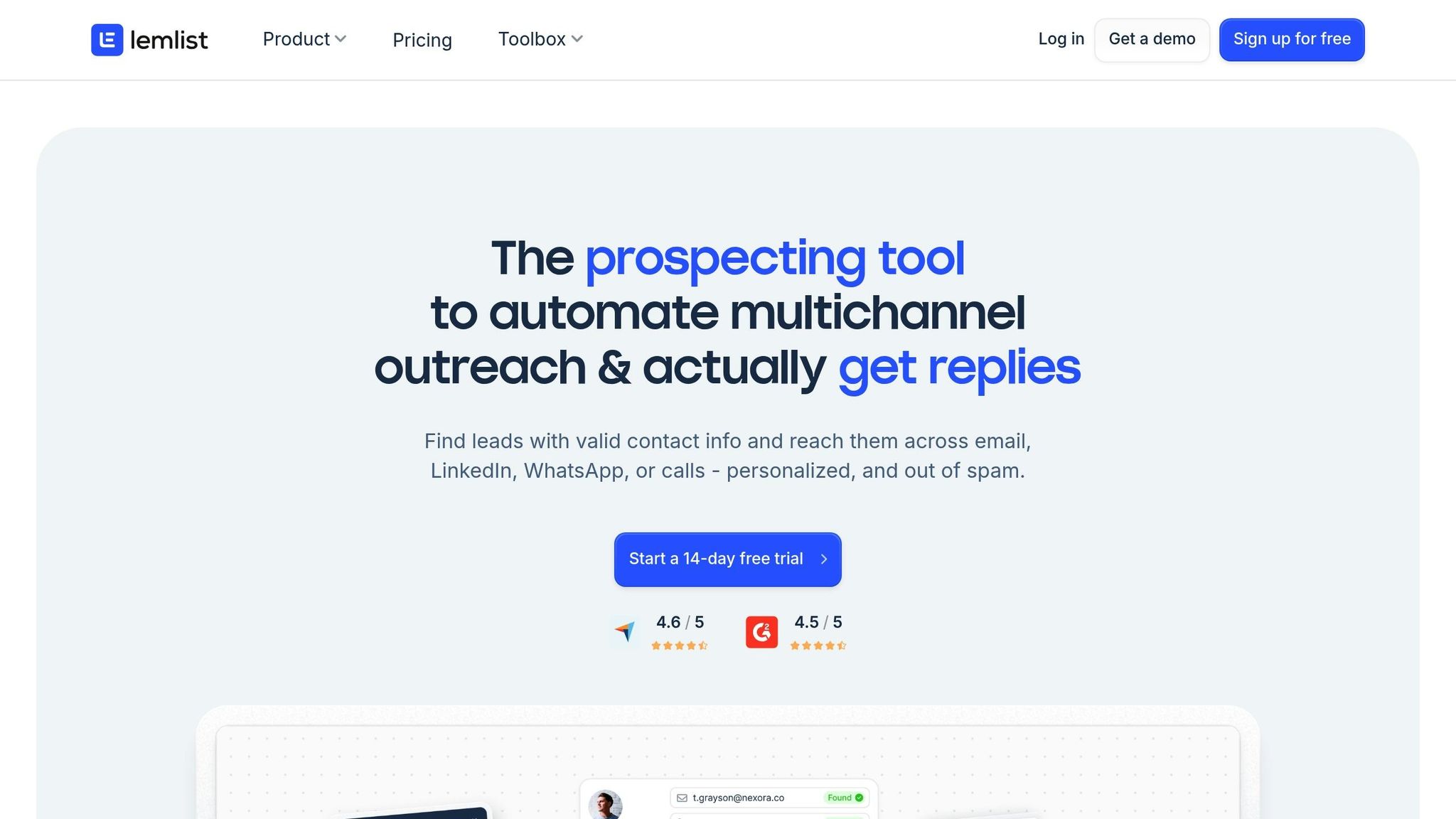
Lemlist stands out in the cold email world by focusing on visual personalization and using behavioral insights to create more engaging outreach campaigns.
Using Behavioral Data
Lemlist keeps track of key engagement metrics like email opens, link clicks, and website visits. By monitoring these signals, marketers can quickly spot interested prospects and tweak their strategies based on how recipients interact with their emails.
AI-Powered Personalization
With the help of AI, Lemlist takes personalization to the next level. The platform can automatically generate custom visuals tailored to a prospect's profile, making emails more eye-catching in busy inboxes. It also analyzes past engagement data to determine the best times to send emails and improve the overall flow of campaigns.
Automation and Scalability
Lemlist makes scaling outreach easier with automated email sequences that adapt based on recipient behavior. Follow-ups are timed and relevant, ensuring better engagement. The platform also integrates seamlessly with tools like Zapier and popular CRMs, simplifying campaign management and workflow organization.
Standout Features and Integrations
One of Lemlist's standout features is its visual personalization engine, which plays a central role in grabbing the attention of prospects. The platform also offers LinkedIn automation tools, adding a multi-channel element to its email outreach. This combination of visual focus and multi-channel engagement complements broader inbound strategies, like those offered by HubSpot.
Next, HubSpot takes a fresh approach to using behavioral data in its inbound strategies.
4. HubSpot
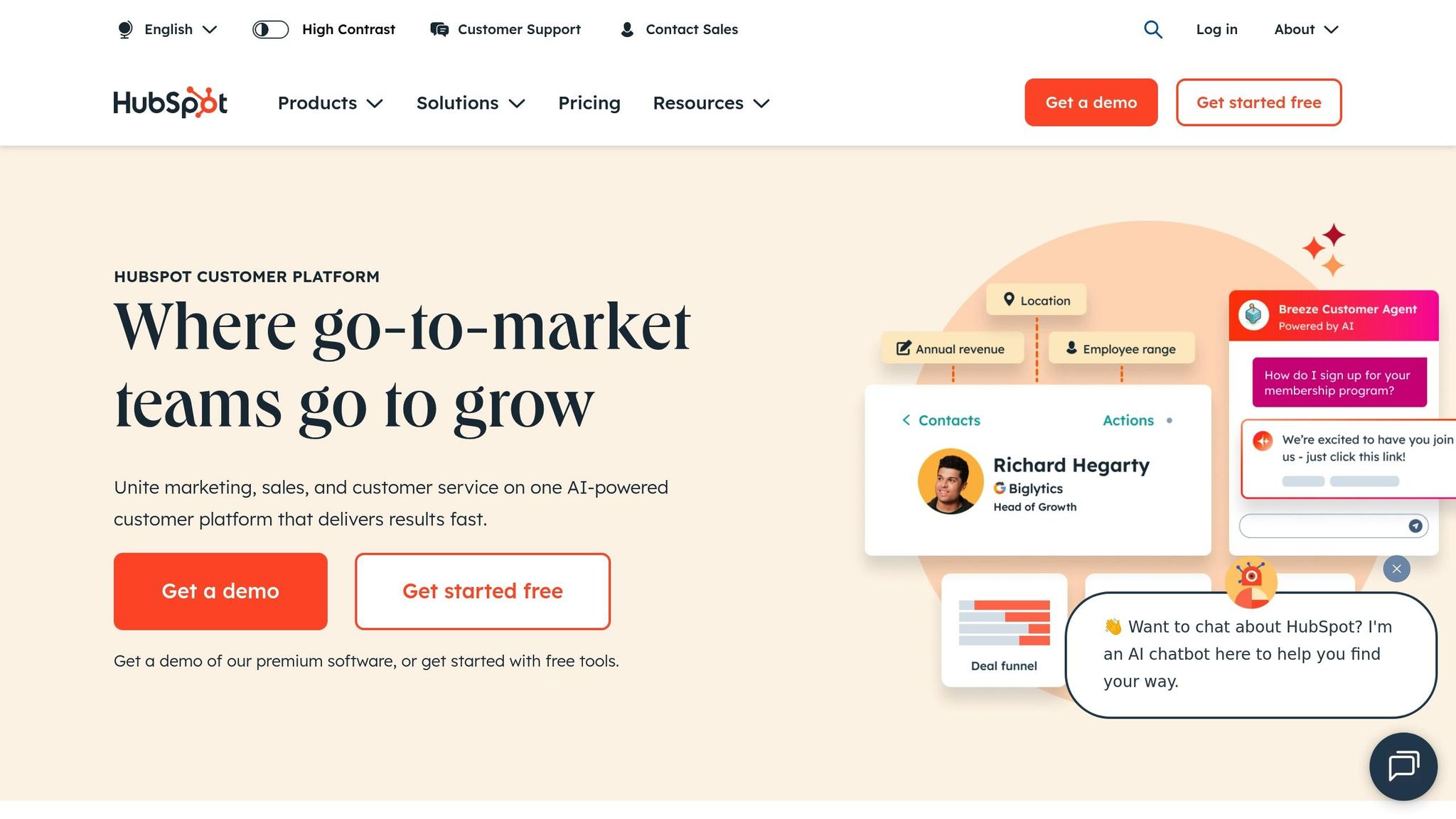
HubSpot combines its CRM expertise with AI-driven insights to create outreach campaigns that feel both personal and relevant. By blending precise targeting with long-term engagement strategies, the platform ensures every interaction resonates with prospects.
Behavioral Data at Work
One of HubSpot's standout features is its ability to track and analyze behavioral data across all stages of the customer journey. From monitoring visits to pricing pages and downloading case studies to tracking time spent on product pages, the platform builds in-depth profiles of prospects. It even scores leads automatically based on these behaviors, helping businesses prioritize their efforts.
HubSpot doesn’t just focus on active engagement - it also keeps an eye on declining interest. For example, if a prospect was highly engaged a few months ago but has since gone quiet, the platform flags this and suggests re-engagement tactics tailored to their past interactions.
Advanced AI Personalization
HubSpot’s AI tools go beyond simple personalization, like adding a name to an email. The platform analyzes behavioral patterns to recommend the best content, messaging angles, and even the ideal time to reach out. These insights are based on both individual engagement history and trends from similar prospects.
What’s more, these AI-driven recommendations integrate directly into automated workflows, adjusting in real time to ensure every interaction feels timely and relevant.
Scalability and Smart Automation
HubSpot’s workflows adapt dynamically, fine-tuning messaging, frequency, and communication channels based on how prospects interact with content. Through progressive profiling, the platform gathers detailed information over time without overwhelming users with too many questions at once.
The system also responds to behavioral signals automatically. For instance, if a prospect starts exploring competitor comparison pages or increases activity on your website, HubSpot can either alert your sales team immediately or send tailored content like case studies to address their interests.
Tools and Integrations That Stand Out
HubSpot’s conversation intelligence feature takes sales call recordings and analyzes them to uncover patterns in behavior and identify effective messaging strategies. This data feeds back into the platform, refining future outreach efforts based on real-world results.
Attribution reporting is another powerful tool, linking specific behaviors and touchpoints to revenue outcomes. By showing which actions lead to closed deals, HubSpot helps sales teams focus on the signals that matter most.
Thanks to its wide range of integrations, HubSpot ensures that behavioral data flows seamlessly across platforms. This creates a unified view of prospects, enabling highly personalized and effective outreach.
Unlike tools that center solely on initial contact, HubSpot’s combination of conversation intelligence and attribution reporting supports ongoing, revenue-focused engagement that extends well beyond the first touchpoint.
Platform Advantages and Disadvantages
Each platform offers its own mix of strengths and limitations when it comes to using behavioral data and AI-powered personalization. Knowing these differences is essential for businesses to select the right tool based on their growth stage and outreach needs. Here's a closer look at how these platforms stack up:
Salesforge simplifies advanced AI personalization for smaller teams through its automation tool, Agent Frank. Its standout feature is its all-in-one approach, which combines email warm-up, validation, and multilingual capabilities. However, its heavy focus on email might not suit businesses that require deeper CRM integration or more advanced tracking options.
Outreach shines in enterprise-level behavioral analytics, offering tools like conversation intelligence and revenue attribution tracking. It excels in analyzing sales call patterns and linking specific behaviors to closed deals, making it invaluable for large sales teams. That said, its complexity can be a drawback - smaller teams may find the steep learning curve overwhelming, and its advanced features might feel excessive for simpler outreach campaigns.
Lemlist is all about creativity, using dynamic images and videos to grab attention in crowded inboxes. It also supports multichannel outreach across email, LinkedIn, and phone. However, its behavioral data analysis isn't as advanced as enterprise-level tools, and its creative features can require a significant time investment to implement effectively.
While Lemlist focuses on creative outreach, HubSpot offers robust tracking of the entire customer journey. From initial website visits to post-purchase engagement, HubSpot provides detailed insights with tools like progressive profiling and lead scoring. Its main drawback is email deliverability - while great for nurturing existing leads, it may not be as effective for cold outreach compared to more specialized platforms.
Here’s a quick comparison of the platforms and their key features:
| Platform | Behavioral Data Utilization | AI Personalization Features | Scalability & Automation | Unique Tools & Integrations |
|---|---|---|---|---|
| Salesforge | Email engagement tracking, lead scoring via Agent Frank | AI-crafted messaging, multilingual personalization | Unlimited mailbox management, automated prospecting | Agent Frank AI SDR, Warmforge email warm-up, Primebox™ unified inbox |
| Outreach | Comprehensive conversation intelligence, revenue attribution | Advanced messaging optimization, call analysis | Advanced sequence management | Sales call analysis, attribution reporting, extensive CRM integrations |
| Lemlist | Multichannel engagement tracking, basic triggers | Dynamic image/video personalization | Moderate automation with multichannel sequences | Creative tools, LinkedIn integration, custom landing pages |
| HubSpot | Full customer journey tracking, progressive profiling | AI content recommendations, timing optimization | Dynamic workflows, real-time behavioral adaptation | Conversation intelligence, attribution reporting, broad ecosystem integration |
When deciding between platforms, team size and technical needs often play a big role. Salesforge is ideal for growing teams that want powerful AI personalization without the hassle of complex setup. Outreach caters to large organizations that rely on detailed behavioral analytics. Lemlist appeals to marketers looking to stand out with visual creativity, while HubSpot is perfect for businesses that need end-to-end customer journey management beyond cold outreach.
Budget is another factor to consider. Salesforge offers advanced AI features at a starting price of $48/month, making it a cost-effective option for smaller teams. Meanwhile, Outreach and HubSpot require a larger financial commitment but deliver more comprehensive data analysis tools, making them worth the investment for high-volume sales operations.
Conclusion
AI-powered behavioral data analysis has revolutionized cold email outreach, shifting it from impersonal mass messaging to meaningful, tailored conversations. Each platform taps into behavioral insights in its own way, catering to the diverse needs of sales teams. These insights not only enable more personalized outreach but also simplify decision-making processes.
For teams looking for an easy entry into AI-driven personalization, Salesforge is a standout option. Its AI SDR, Agent Frank, automates lead generation and outreach while offering advanced personalization features - all without overwhelming complexity.
On the other hand, enterprises with more intricate requirements may find value in platforms that provide deeper analytics and richer customer insights, though these often come with steeper learning curves and higher costs.
Some tools emphasize visually engaging personalization, making them a great choice for creative teams aiming to craft unique, standout messages. Whether your priority is robust tracking, dynamic visuals, or seamless automation, it’s essential to align the platform’s strengths with both your immediate needs and long-term goals.
Despite their differences, these platforms share a common advantage: they use AI to turn behavioral signals - like website visits, email opens, and content downloads - into actionable insights that boost engagement. When choosing a solution, consider factors like user-friendliness, scalability, and how well it integrates automation with analytics.
The future of cold outreach lies in platforms that combine behavioral intelligence with AI automation. Select a tool that fits your current needs but can also grow with your evolving personalization strategies. With AI-driven personalization, cold outreach becomes a powerful, data-informed way to engage your audience.
FAQs
How does AI use behavioral data to personalize email outreach?
AI uses behavioral data - like browsing habits, email interactions, purchase records, and preferred contact times - to craft emails that feel personal and relevant. By studying these patterns, AI can fine-tune messages to align with each recipient's preferences, boosting engagement and response rates.
Tools such as Salesforge elevate this approach by leveraging AI to adapt email content in real time based on behavioral insights. This makes every email feel timely and tailored, helping outbound sales campaigns become both more impactful and easier to scale.
How does Salesforge's AI personalization compare to platforms like Outreach and HubSpot?
Salesforge sets itself apart by delivering AI-powered personalization specifically designed for scaling cold email outreach. Its standout features include generating tailored emails for each lead, automated email warm-ups, email validation, and support for multiple languages - all aimed at streamlining outbound sales efforts.
On the other hand, platforms like Outreach and HubSpot cater to broader sales and marketing automation needs. While they use AI to create outreach content and provide insights, they might not match the level of hyper-personalized email creation or scalability that Salesforge offers. This sharp focus on cold outreach automation positions Salesforge as a go-to solution for teams looking to enhance their outreach effectiveness.
What should businesses look for in an AI-powered outreach platform to match their growth stage and outreach goals?
When choosing an AI-powered outreach platform, it’s important for businesses to consider scalability, key features, and cost-efficiency to ensure the platform matches their growth stage and outreach objectives. For startups or smaller teams, tools like Salesforge can be a great fit. They provide features such as AI-driven personalization, email validation, and automated prospecting, making outreach more efficient without adding unnecessary complexity.
For larger organizations with more advanced requirements, it’s worth looking for features like multi-mailbox management, multilingual email generation, and AI-powered SDRs to manage higher campaign volumes and more complex workflows. No matter the company size, selecting a platform that supports cold email personalization and prioritizes deliverability is critical for maintaining consistent success in outbound sales efforts.

.png)

